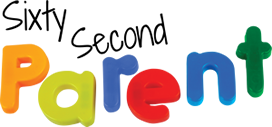
Head lice are a common and frustrating problem for parents and children, with the main symptom being an itchy scalp from the bites. Fortunately, lice are not dangerous and do not spread disease, but they are contagious, so it is important that those infected get proper treatment as soon as possible.
What do head lice look like?
(Photo CDC)
Head lice have three forms: the egg (also called a nit), the nymph, and the adult as shown above. The nymphs and eggs can me very small and difficult to see. especially if your child has dark hair.
Where to look on your child’s head
Head lice and head lice nits are found almost exclusively on the scalp, particularly around and behind the ears and near the neckline at the back of the head.
(Photo Westchester.gov)
Who is at risk of getting head lice?
Head lice are found worldwide. In the United States, infestation with head lice is most common among the 3-10 age group, and the household members of infested children.
Head lice move by crawling; they cannot hop or fly. Head lice are spread by direct contact with the hair of an infested person. Anyone who comes in head-to-head contact with someone who already has head lice is at greatest risk. Spread by contact with clothing (such as hats, scarves, coats) or other personal items (such as combs, brushes, or towels) used by an infested person is less common. Personal hygiene or cleanliness in the home or school has nothing to do with getting head lice.
Removal by hand
Removal by hand is the best method – Lice and nits (head lice eggs) should be removed by hand using a fine-tooth comb on your child’s wet, conditioned hair every 3 to 4 days for 2 weeks after the last live evidence of lice.
Tips for avoiding head lice:
- Do frequent head checks! Lice is a lot easier to eliminate when caught early. The pictures above will help you know what to look for.
- Girls should keep hair back in ponytails, buns etc. – Head lice are spread most commonly by direct contact with the hair of an infested person. Spread by contact with inanimate objects and personal belongings may occur but is very uncommon. To be completely safe if may be a good idea to avoid sharing hats, sporting helmets, earphones, brushes, combs etc..
- Talk to other parents about lice! The more parents communicate the better chance outbreaks can be contained.
(Reference CDC)
By Ladibugs – www.ladibugsinc.com In 2010, when Lisa Rudquist and Rachel Knutson first learned their kids contracted lice at school, they were worried, embarrassed…and itchy. As registered nurses, they were shocked to find the over-the- counter treatments made their kids’ eyes burn and smelled terrible. Worse yet, they also contained kerosene derivatives, pesticides and petroleum – the last things you want to put on your child’s head.
Lisa and Rachel learned there were no organic or all-natural treatments on the market. But instead of running from the bugs, they faced them “head” on. After an impromptu minivan conference in the school parking lot, they channeled their energies into finding a better way to annihilate the critters.


